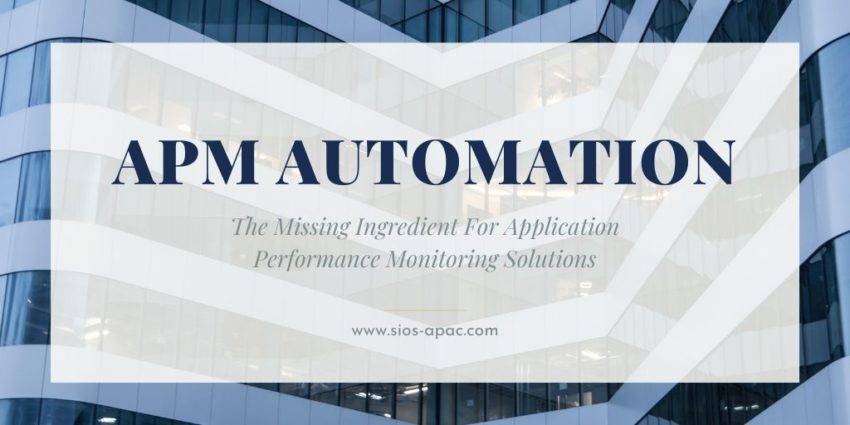
APM Automation – The Missing Ingredient For Application Performance Monitoring Solutions
Companies that move to the cloud to host their applications understand that while they have outsourced the hosting of their applications to third-party cloud vendors such as Amazon Web Services, Microsoft Azure, and Google Cloud Platform, they still need to monitor and manage those applications themselves, usually with an Application Performance Monitoring (APM) solution. With yesterday’s client-server computing applications, IT departments had almost complete control over the servers, the networks, and the end-user computing environments. But today’s cloud environments are more complex, with many more moving parts often outside of your control.
Some companies have embarked on digital transformations, pushing customer interactions into critical, web-based applications. It is now more important than ever to quickly respond to any application performance and downtime issues via an APM automation solution.
How to select an APM solution
Many companies turn to Application Performance Management (APM) solutions such as those from AppDynamics, Datadog, Dynatrace, or New Relic. An APM solution should identify any performance bottlenecks in your code, and help you fix those issues before your users are impacted.
Good APM solutions will let you know what happened, why, and how to prevent it from happening in the future. An APM solution will alert you when the application or systems being monitored meets a certain condition (load, response times, etc.). Once you receive an alert you should be able to identify why the application is not performing properly. Armed with this information you can provide your development team with very detailed diagnostics that will allow them to address the issue and prevent them from happening in the future.
But how do you select the right APM solution? A quick search on Google for “cloud APM solutions” returns 5,830,000 results! That can be overwhelming to anyone unfamiliar with the space. Thankfully another Google search will also provide you with a lot of advice and resources on how to select an APM solution that is right for you. You should look for third-party, non-vendor advice to help you frame your requirements and develop a short-list of choices that meet those requirements. Gartner has been watching this category for a while and publishes its APM Magic Quadrant every year. It is a good resource when it comes to understanding how to evaluate APM solutions and give a good overview of the top vendors.
Add APM automated to your remediation requirements list
Here at SIOS Technology Corporation, we are always working with customers who are migrating their applications to the cloud. They often want to know how to protect their applications from unnecessary downtime and ask us for our advice. The choice of how to protect their applications is a function of the criticality of those applications (more critical applications often require failover solutions, etc.). But we also help them understand why their applications might be vulnerable.
It used to be that backup and data protection was a separate function (one that was needed only if the APM solution identified downtime). But in today’s complex cloud environments we believe that organizations should look for a holistic approach when it comes to monitoring and managing their critical applications. If a traditional APM solution identifies when something happens and lets you diagnose why it happened, then why doesn’t it prevent unnecessary downtime where possible?
We believe that automation is the missing ingredient from most cloud APM solutions. Many of our customers tell us how they are being overwhelmed by receiving too many alerts from their APM solutions, each requiring them to stop and understand what happened and why. They quickly understand what to ignore and what to pay attention to (and good APM solutions help them do this through machine learning). And if and when their applications go down, the APM solution alerts them to the downtime and diagnoses why to help prevent it from happening again. But the APM solution won’t reduce their immediate downtime.
Save yourself from downtime. Talk to SIOS experts about how SIOS high availability clustering software can monitor the entire application stack – server, storage, network, and application layers – to ensure applications are operating. SIOS Protection Suite includes application recovery kits that monitor and, in the event of a failure, orchestrate failover according to application-specific best practices. SIOS clusters uniquely failover across cloud availability zones and regions for disaster recovery.
Reproduced with permission from SIOS